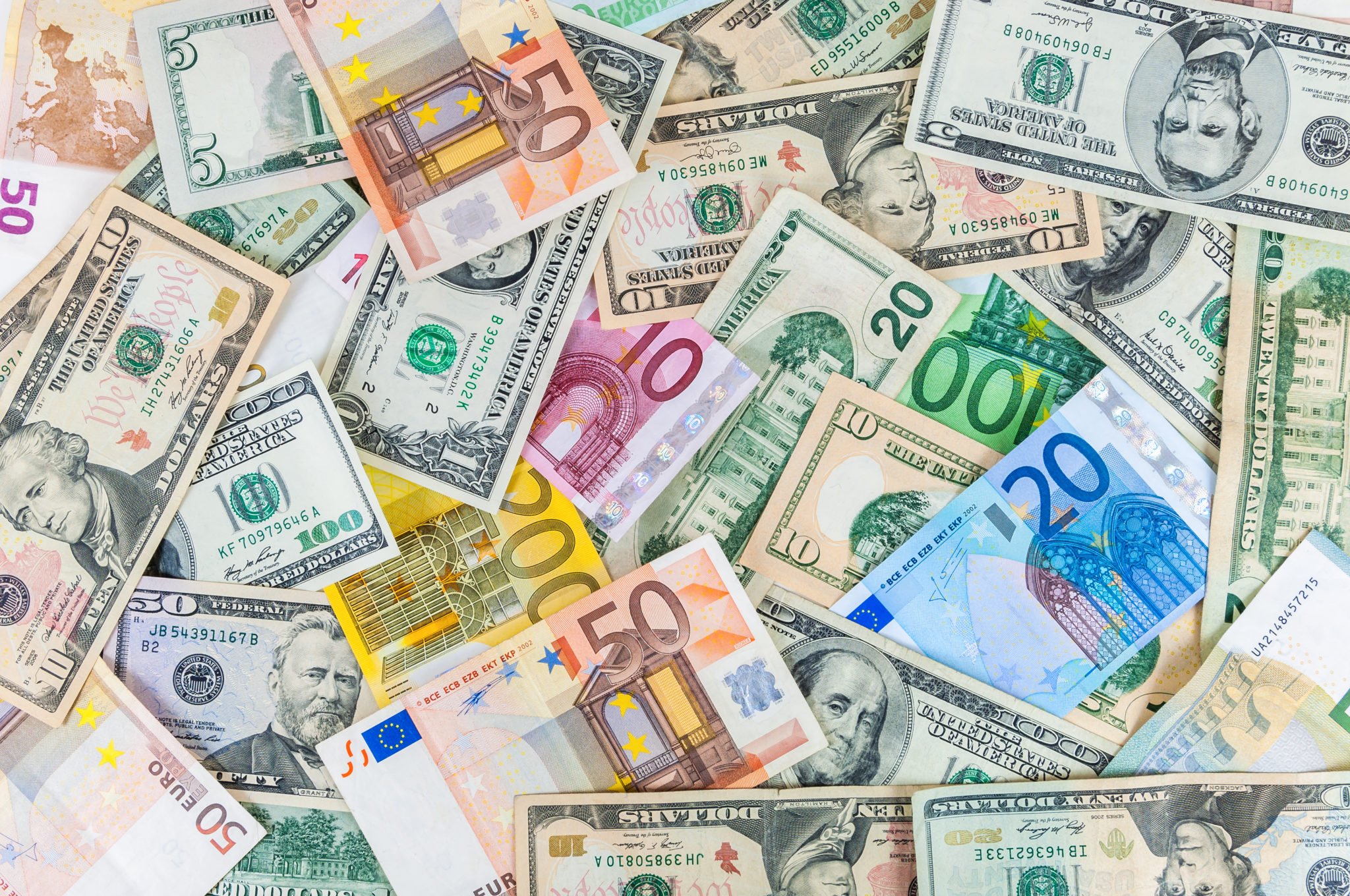
- calendar_month August 3, 2022
- folder Real Estate News
Sharing Tags
Federal Funds Rate, Interest Rates, Mortgage rates, Real Estate 2022, Real Estate Crash, Real Estate News, Redfin, Zillow
Industry, Politics & Econ August 2, 2022 By: Harout Keuroghlian
If you’ve been paying attention to the news you likely saw the U.S. dollar surpassed the euro recently. The shift happened on Wednesday, July 20th to be exact. But I wouldn’t go popping the champagne just yet. You might be asking “How can the strengthening of our nation’s currency be anything but good?” Yet, there’s a danger in shooting too high, especially when your currency is already adopted as the world’s currency. And while the news may point at conditions getting better over the long-term, many people are overlooking the more imminent hardship. What does this mean for American real estate and our economy on the whole? Let’s examine the ramifications of the changes we recently witnessed with the euro versus dollar.
Two Major Reasons for the Dollar Rising Against the Euro
Why did the U.S. dollar rise against the euro? Frankly, there are a multitude of factors. Take your pick between a global pandemic, Russia’s invasion of Ukraine, China’s supply chain issues, and the U.S. ramping up domestic manufacturing. These are just a few of the ingredients responsible for this rapid change in the U.S. dollar’s strength. But I believe there are two factors that outrank the others in impact.
(1.) Self-Reliance – The conflict in Ukraine has found much of Europe struggling to find an alternative to Russian energy sources. Over time, self-reliance will likely strengthen Europe. But in the meantime, their dependence on Russian energy sources has weakened their currency. The U.S. is much less reliant on Russian energy sources and therefore has weathered these conditions with far less damage.
(2.) Aggressive Inflation Response – The U.S. approach to solving our inflation crisis has been aggressive to say the least. The Federal Reserve induced a recession by hiking interest rates by 0.75% in a single evening on June 15th. European countries don’t have the same fortitude to endure that kind of shock to their system. In fact, they initially tried to do anything in their power to prevent recession. But on July 21st, the European Central Bank followed suit and hiked interest rates by a less aggressive but still significant 0.50%.
Here in the U.S., the increase in interest rates has already had an impact on the housing market that many would view as negative. And they’re probably right in the short term. The U.S. dollar rising against the euro is actually a reflection of that.
Think the U.S. Benefits from This Sudden Strengthening? Think Again
The strengthening of the U.S. dollar actually helps everyone in the world except for the U.S. Sure, it can buy more these days. But it’s buying weaker assets. And since the currency of every other economy doesn’t go so far in the U.S., they’re taking their business elsewhere. We are too! And the more that we and every other country pour our money into other countries, the stronger their economies grow.
Before the pandemic floored the world as we know it, foreign investors owned about 20% of American real estate. But they’ve been pulling out in droves since. They just can’t afford us anymore; not at these rates. Ultimately, this is probably just what we need to stabilize our housing crisis. With foreign investors pulling out en masse, we can begin the slow process of providing housing to the demanding U.S. public. But it’s a long, hard road to get to that point and it’s important to prepare for it.
It’s also important to distinguish that the U.S. dollar rising against the euro has less to do with the dollar’s strength and more to do with the weakening of the euro. We love a strong dollar. We just don’t want it to be too strong by comparison to our peer currencies. It’s almost like a game of The Price is Right. In the popular game show, the goal was to guess a dollar amount closest to the item in question without going over the amount. Well, with currency, you want just enough strength to be considered the world’s currency. But the higher you go after that point, the further you drift from a healthy economy.
Regaining Control of the Runaway Dollar
So, what can we do to begin regulating the dollar’s strength? Again, this is actually more the euro’s story. So, one way we could attempt to get the situation under control is by becoming more active in taming the situation in Ukraine. Russia’s invasion is a huge factor in the world’s economic destabilization. The sooner that conflict ends, the better for everyone.
We also need to be patient with our efforts to reduce inflation. Trying to harness our inflation too aggressively could ultimately do real damage to our housing market. The last thing we need is to find ourselves in a see-saw between interest rates and inflation. Taking a strong, yet consistent and measured approach to reducing inflation is our only way forward.
Alarmingly Rapid Shifts
For those familiar with currency fluctuation, the recent rapid changes are likely concerning. Typically, currency is a rather stable medium. Yet, just at the end of June, one euro converted to about 1.05 U.S. dollars. In just weeks, we were seeing a one-to-one comparison. That’s nearly a 5% shift which is remarkable for currency, to say the least.
But any fluctuation in the U.S. dollar’s strength in relation to its nearest peers deserves attention based on its use as the dominant global economy. In April 2019, the U.S. dollar was active in about 88% of global FX transactions according to that year’s Triennial Central Bank Survey. As the dollar rises in strength and more international transactions turn away from the U.S., this number will drop.
We also need to consider the enormous U.S.-based corporations with a significant portion of overseas transactions.I’m referring to companies like Apple, Nike, Ford, Chrysler, and Tesla. Their revenue is likely to decrease along with their profit margins as the dollar continues to surpass other currencies in strength. With so much of their revenue outside of the U.S., they’re facing a deep profit cut when it comes time to exchange.
The Power of American Real Estate in the Face of Economic Instability
In times like this, it’s easy to feel powerless. But there are still ways to insulate yourself against the coming impact. Real estate is one of them. In fact, it’s one of very few truly stable assets in the face of inflation. It needs to be a priority as we dig into this recession because I don’t think we’re seeing an end to it anytime soon.
If we don’t take serious action about the housing market, we’re going to see a lot more unhoused individuals over the coming months and years. California alone needs to build 3.5 million new housing units before 2025 to satisfy demand. As I mentioned in my recent blog, the pandemic was a significant factor in the issues we’re facing today. Desperately needed building projects came to a screeching halt. Investors pulled out with no end to supply chain shortages in sight. Material costs skyrocketed, leaving the projects that had been started in limbo.
Home Equity is Still High in the American Real Estate Industry
The bubble isn’t bursting anytime soon. Home equity is at an all-time high. And people aren’t going to let go of those kinds of investments for anything. And conditions are easier to handle than they were during the 2007 crash. These days, people have a wealth of resources to help them keep their properties. Homes can be rented out or even partially rented out through Airbnb. Gig work is also more prevalent now with rideshare services and delivery services generating supplemental income. Therefore, we’re not likely to see the mass relinquishing of homes we witnessed starting in 2007.
Does the U.S. dollar rising against the euro mean good times are ahead? Not for a while. But I fully believe that at the end of this hard road, we’re going to have a much healthier American real estate industry. But we’ll need to do our best in the meantime if we all want to make it to the end of that long, hard road.
